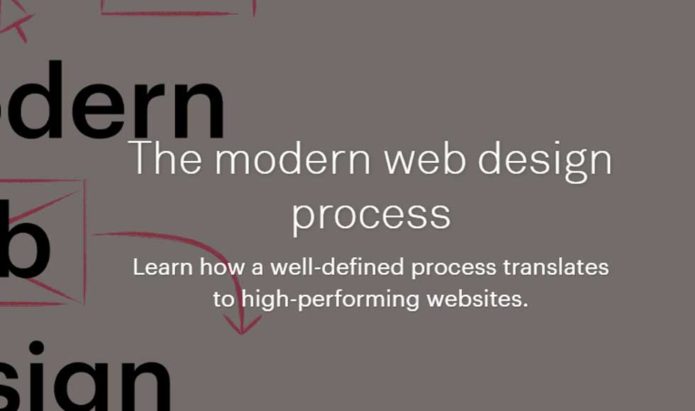It’s the most exciting of times to be crafting digital communications and yet the dullest of times too. Let me explain.
When I started my career in digital marketing and advertising I was enthused by the spirit of building things. It truly marvelled me how the digital realm was being moulded with exciting new boundary pushing builds that were testing the limits of technology. It was the time when Flash as a technology had truly matured. I spied websites like the famed ”Get the Glass’ site a marvel of web design and stop animation. The clients were dipping their toes in the digital medium and they truly had the appetite to experiment. Partly because there were no established playbooks, partly because we were seeing rapid evolution of platforms. They were willing to boldly go where none had gone before for marketing. Some of that magic has mysteriously disappeared in the 11 years that have passed since. So what has changed and why are we now purporting what I’ve come to call the great digital lie?
A change in technology
Evolving technology definitely affects web development. If you are in your early 40s and you learnt to code HTML in school, or on your first job, you’d find so much has changed in this space that it might be unrecognisable. Syntax and norms keep evolving. We now have off the shelf coding frameworks and design languages that speed up web development through standardisation.
Apart from the way we write code, the internet has grown faster and its reach wider. Fibre optic enabled internet lines have provided for a tremendous speed bump up from traditional ADSL lines. What’s more, we now have 5G mobile networks that are about to be rolled out. Promising faster wireless connectivity.
The underlying technologies that powered the web have changed many times over. Flash has met its demise at the hand of apple. Yet CSS has helped bridge the gap mimicking a lot of what Flash was used for. Java Script now has as many flavours as you find gelato in your nearest ice cream shop. We are also firmly in the age of viable ‘no-code’ SAAS options. But more about that later.
Computing processing power has increased at such a rate that today, Moore’s famed law is now obsolete. Facebook just announced the launch of its own super computer for AI development, touted to have a speed up to five exaflops. An easy way to explain how far we’ve come is perhaps that the computing power in an average iPhone is now 100,000 more times powerful than what was used in the computer on the Apollo 11 lunar lander. That’s a gap of fifty three years of computing development.
We are at at the doorstep of Virtual Reality and Augmented Reality becoming accessible to the average person (though we are still a way off still for the former). Just last week a new Playstation VR was announced which appears to be slimmer and easier to use than its predecessor.
A change in consumption
The biggest change obviously is the use of cell phones to browse the internet and access internet enabled services. Our websites and web experiences have had to adapt to these platforms of many sizes and standards. In more developed countries you won’t be surprised to spy non-stpp parades of cell-phone bearing pilgrims, heads bent and praying to the marvel in their hands, or walk past statuesque figures of the same who appear to be be isolated from the world around them. This always on consumption on the move has meant that we are scanning more reading less than when we were seriously consuming with stationary attention. Perhaps the Covid-19 pandemic had us spend more time at our desktops. It remains to be seen.
Yet there are other changes too. Some tech trends have fallen out of favour and flavour. Like RSS feeds. While it is still there, the time of RSS readers has seemingly passed. Audio has come into its own. While we have seen the demise of mp3 players we are enjoying the age of streaming and audio is no exception. There are millions of podcasts being generated every minute. I dare say that if you had experience with a radio channel, you would definitely be in your second calling at this very moment. Let’s not forget voice assistants for smart homes from Alexa, Siri and the voice of Google Home – they are an evolution of audio too.
Let’s not forget video. It’s been predicted that in 2022 the average person is going to watch 100 minutes of video every day and contribute to 82% of all internet traffic. Youtube and Tiktok are the most popular video consumption platforms. This doesn’t include the countless hours we’ve come to spend on video chat from Whatsapp to Zoom. There have been incredible developments in the coding that drives live streaming of content which is why we now have incredible high definition video content available on Amazon Prime & Netflix.
A templatised future
In the early days of web development everything had to be created from scratch. This took time and the process was often a messy one. Yet with such pains came the need to ensure that the output was unique. It’s what kept the coders sane. If something needed fixing, often the solution was to completely redesign and rebuild it from the ground up. We weren’t afraid of reinventing the wheel time and again, just to see if we could do better. The main challenge of the day was, who would take the pains to go through and understand someone else’s code base and correct things? Today there is a market in partially pre-built solutions. These range from code snippets that you can purchase from marketplaces to full blown templates to the do it yourself ‘No-Code’ movement that is an evolution of the WYSIWYG editors of old. Where one does the design and the software automatically generates the code for you.
You can easily buy pre-built templates for everything from your websites, to newsletters, to even graphical elements and animations you can add to your videos. There are templates for physical product mocks too. If you have a web development need, there’s often a full blown template already available or choose from mix and match components that you could combine together for best effect. There are both marketplaces for templates and browser based software / tools that make editing templates easier. The growth of the popularity of Canva as an option for small businesses creative problems is proof in point.
With everyone focussing on a virtual reality, ‘Meta’, future you can be sure that there will be off the shelf templates for this too in the not so distant future. There are already many places that you can buy 3D assets to fill your games and other 3D projects with.
The problem with this approach is what Asians would call “Same, same but different”. This as a problem is very evident in the SAAS space. Just randomly visit a number of SAAS service providers from Google and you will notice that all the sites follow similar templates and colour schemes. You will see sites that are awash with purple and blue shades. There are bound to be a lot of Lottie inspired flat illustrations and geometric shapes. So much so that once you exit the site, I wouldn’t be surprised if you could remember and distinguish one experience from the other. This is where the digital lie begins.
Deciphering the digital lie
So what is the digital lie? Perhaps it would be better to call it a digital complacency that advertising agencies find themselves complicit with. We’ve created a culture of dumbing down digital strategy to the extent that the current crop of mainstream digital communications that we churn out don’t really push technical boundaries. If you were to audit your current campaigns and strategy you might realise that a majority of it boils down to Jpeg artwork assets, a well edited video, and perhaps some audio. This is what you need to feed the social media engines and digital media beasts after all. Yet these don’t take as much digital expertise to execute. E-mail which is the other workhorse for digital campaigns also sees limited scope for technical innovation. Within this small fenced off area of digital development agency folk who have worked donkey years in the traditional advertising business find it comfortable to graze on such briefs because it is just about enough familiar territory with a flavour of something new for them. But what’s missing is that most of these campaigns are not really leveraging the fundamental aspect of what makes a communication digital.
Sure, you can argue that it exists on a digital platform, and is deigned solely against digital specifications and distributed across digital channels to exacting targeting that is only possible through digital medium. The truth is, unless you are using the underlying principles that make the digital communication piece different, and truly understand the mechanics behind your frontend experience, the work you produce will be no different from the static images you create for print on a very fundamental communication level. In the beginning this was a crippling issue because a lot of early digital clients wanted to re-adapt work done for print to digital mediums. Today there is no excuse for not taking the risk to leverage technology and creating work that plays to the strengths of the digital medium.
So, what are these underlying principles that make digital different you ask? There are many but here are a few that pop to mind. In fact this was a question that was asked to me in some form or the other at an interview at JWT. At the time I came up with over 12 points on the spot. Here is how I would answer that question today.
- Can you personalise it for every user or by their past interactions?
- Is it contextual with regards to time of day and location (geolocation / gps)?
- Does it garner real-time customer engagement?
- Does it facilitate a community around it
- Does it produce usable real-time data?
- Is it user customisable?
- Is there a real time gamifcation element to it?
- Does it mix mediums in different ways?
- Is it non-linear?
- Is it interactive / does user input modify the experience?
Yes it can be argued that the social media beast can offer solutions that cater to this. But this is a very well defined framework in what has been called walled gardens or a black box. None of these platforms are opensource. They don’t let you tinker under the hood, like say WordPress does. Agencies favour strategies that have a social focus because of the paid media element of it and the fact that the turnaround times for such campaigns are relatively faster.
Why there is still hope
Regardless of everything I’ve said, I still believe we are on the cusp of an incredible turn around. If you were to lift up your ostrich head from the pit of mundane social media content, you discover a lot of creative web sites that are either individual projects that are especially exciting. There are some even in the commercial space too which you spy on Muzli every now and then. Whether they are personal portfolios, or concept builds, we are seeing people push the boundaries of what the underlying web technologies can do. From the creative use of parallax, to browser based AR and 3D experiences flourishing, where there were once Flash experiences, there is still a lot of creativity out there.
The starting point and build time for most digital projects are now very different from what they were. Not only do we have established frameworks, the tools we use to build have become much better in streamlining the process. It’s quite exciting to see how many different and well created tools keep popping out and quite a few of them are open source too. A while ago I watched Webflow host a web design competition and I was amazed with what the finalists could come up with using the no code platform. So the short of it is that there is a lot of creativity happening in the corner of the internets if you go out looking for it.
I reckon that there was a period at the peak of industrialisation that man might have asked what was left to invent? Everything seemed to be working fine, with established norms. Digital is by no means a new medium, we’ve come a long way and while things might look comfortable from our viewpoint, we still need to push the boundaries for a more involved and interactive form of communication.





